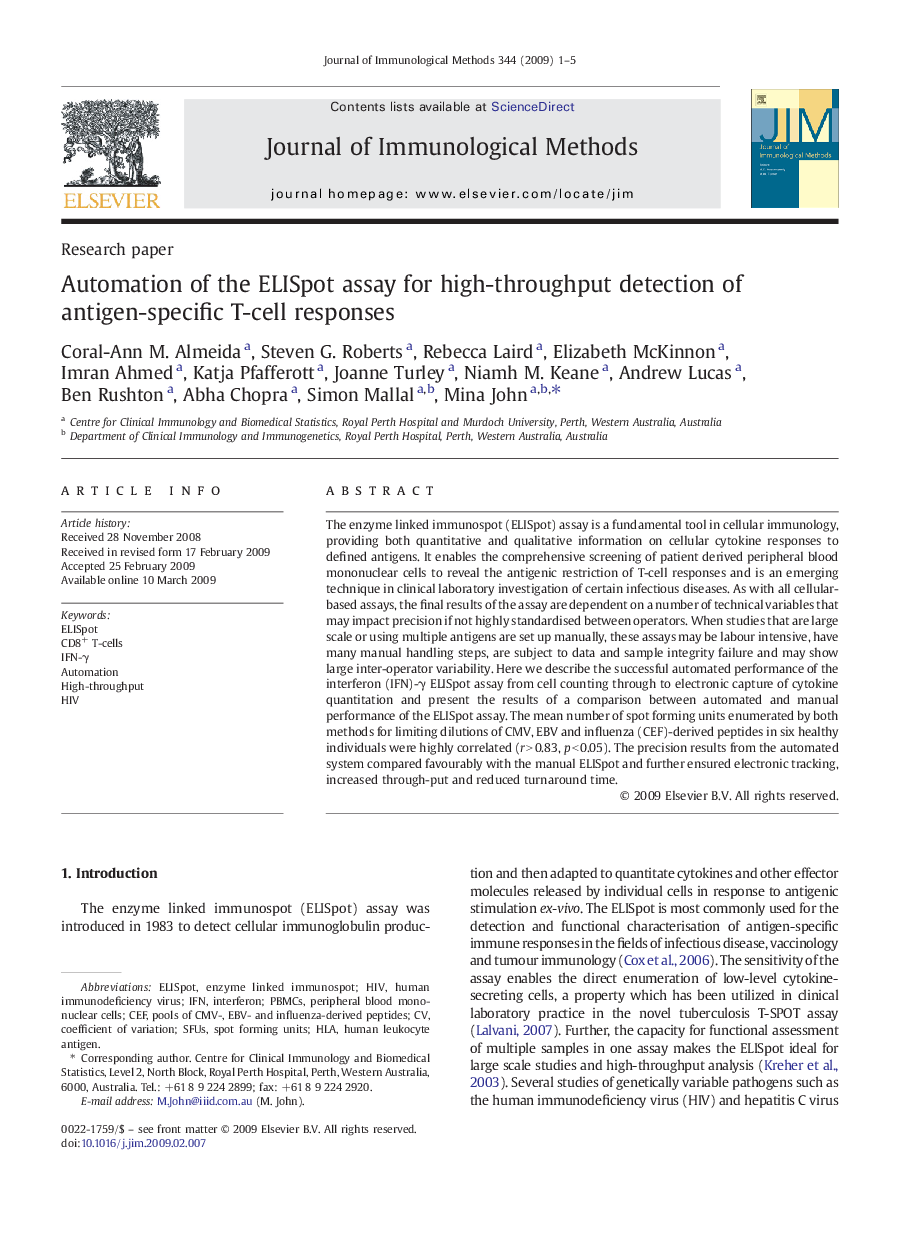| Article ID | Journal | Published Year | Pages | File Type |
|---|---|---|---|---|
| 10889296 | Journal of Immunological Methods | 2009 | 5 Pages |
Abstract
The enzyme linked immunospot (ELISpot) assay is a fundamental tool in cellular immunology, providing both quantitative and qualitative information on cellular cytokine responses to defined antigens. It enables the comprehensive screening of patient derived peripheral blood mononuclear cells to reveal the antigenic restriction of T-cell responses and is an emerging technique in clinical laboratory investigation of certain infectious diseases. As with all cellular-based assays, the final results of the assay are dependent on a number of technical variables that may impact precision if not highly standardised between operators. When studies that are large scale or using multiple antigens are set up manually, these assays may be labour intensive, have many manual handling steps, are subject to data and sample integrity failure and may show large inter-operator variability. Here we describe the successful automated performance of the interferon (IFN)-γ ELISpot assay from cell counting through to electronic capture of cytokine quantitation and present the results of a comparison between automated and manual performance of the ELISpot assay. The mean number of spot forming units enumerated by both methods for limiting dilutions of CMV, EBV and influenza (CEF)-derived peptides in six healthy individuals were highly correlated (r > 0.83, p < 0.05). The precision results from the automated system compared favourably with the manual ELISpot and further ensured electronic tracking, increased through-put and reduced turnaround time.
Keywords
Related Topics
Life Sciences
Biochemistry, Genetics and Molecular Biology
Biotechnology
Authors
Coral-Ann M. Almeida, Steven G. Roberts, Rebecca Laird, Elizabeth McKinnon, Imran Ahmed, Katja Pfafferott, Joanne Turley, Niamh M. Keane, Andrew Lucas, Ben Rushton, Abha Chopra, Simon Mallal, Mina John,
